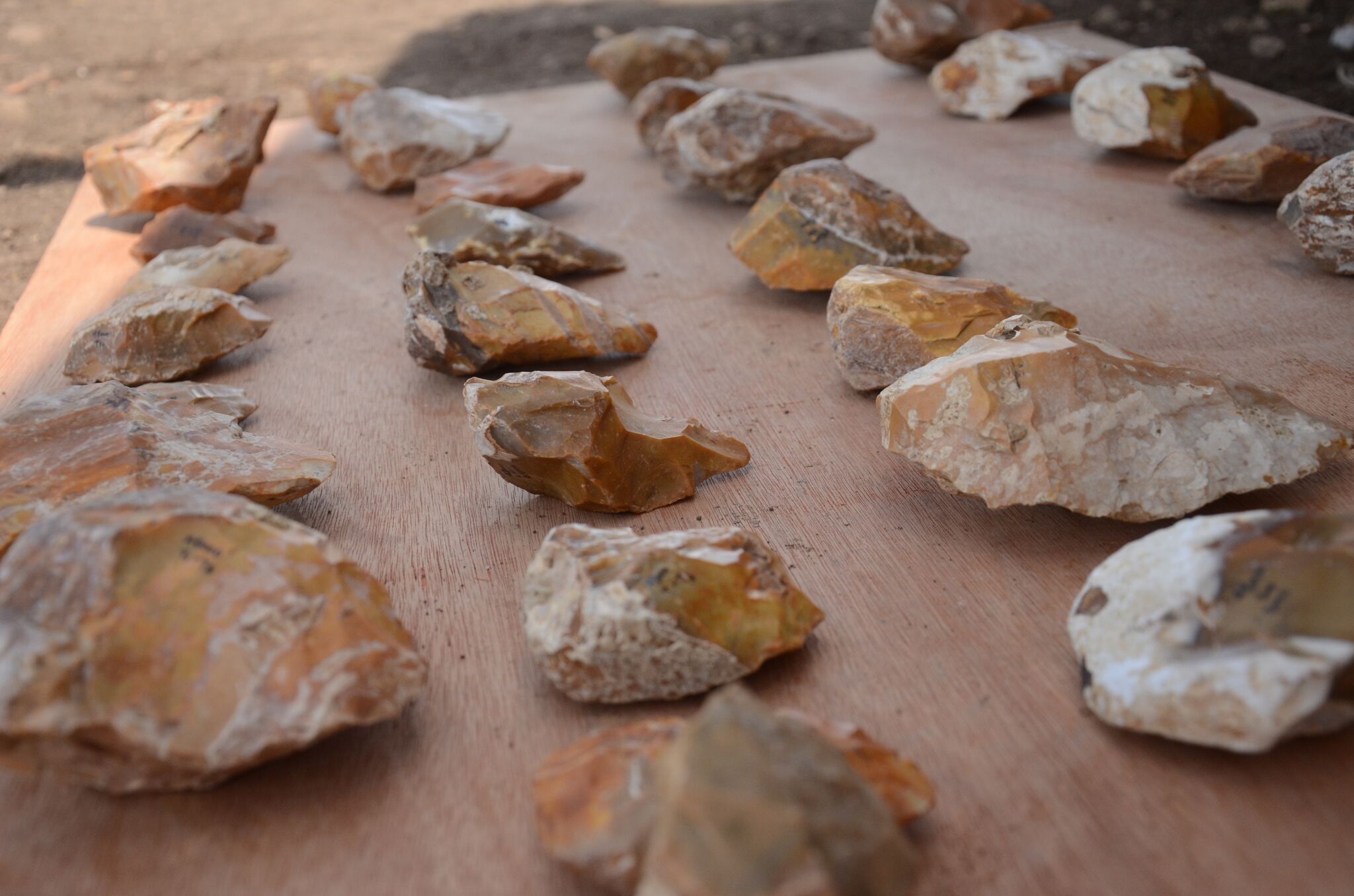
Early Paleolithic camping site in central Israel reveals hundreds of hand flints and hundreds of thousands of stone tools
A treasure trove of flint tools over half a million years old was discovered in a large area between Jaljulia and Intercity Highway 6 in central Israel. Dating from the Lower Paleolithic era (the early Stone Age), when flint tools began to be reproduced in a standard way rather than made ad hoc for a specific task at hand, the site is one of very few associated with the Acheulean culture. Hundreds of thousands of stone tools have been unearthed, including hundreds of hand-flints, early Man’s tool of choice for cutting and scraping. The period in which the area was frequented was also the time that Homo Erectus is thought to have emerged from Africa to populate the Middle East, western Asia and Europe. Although Homo Erectus were nomadic hunter-gatherers, the Israel Antiquities Authority and Tel Aviv University archeologists excavating here have concluded that the site, now buried five meters underground, was semi-permanent; wandering humanoids returned here on a frequent basis in search of water, food, and stone flints for making tools.
Professor Ran Barkai of Tel Aviv University suggests that exciting conclusions can be drawn from the extent of the artifacts, “that early Man had a geographic memory, a sense of place, and may even have returned to the site on a seasonal basis.”
Possibly, the nearby Kaneh stream then ran through the area, which covers 2.4 acres (ten dunam), five kilometers south of a roughly parallel Paleolithic site in Kibbutz Eyal and north of the Kesem prehistoric cave near Rosh Ha-Ayin, whose artifacts are somewhat later.
